2017 KTM 300 XC-W
The Old Man’s Bike Gets New Kid Gloves
MSRP: $9099
- Maximum power for a light bike that really feels light!
- Smooth in torque and smooth without vibrations.
- Durable and tough as well as simple to work on.
- With a carburetor there is some tuning necessary. A little more than in the past.
- PDS suspension requires proper spring rate in the rear.
- You have to mix gas (at 60:1) to haul ass.
Introduction
KTM has been on a warpath of refinement and progression on all of their models. If there was one model that could have been largely left alone, the 250/300 was the bike. But they didn’t leave well enough alone and progressed to the next level of two-stroke performance. Looking at all the things a two-stroke is known for, light weight, simplicity, lower costs and improving in most of those areas. At $9099.00 you can argue it isn’t inexpensive, but there is a lot of bike for that money when you talk performance. With the popularity of extreme enduro and technical trail riding the two-stroke has been looking pretty for a lot of riders these days.
Changes
The 2017 is an all-new bike. Period. Though some shapes of things look familiar, everything is new and improved. Starting with the engine. All-new engine architecture and shaft arrangement is used for better mass centralization with an 8mm higher clutch shaft and a 27mm higher crankshaft position and a new counterbalancer shaft for less engine vibration. There is a new cylinder with an updated power valve, a new electric starter located under the cases, a reworked 6-speed transmission and a hydraulically operated DDS clutch.
The new 38mm flat slide Mikuni TMX carburetor, replaces the Keihin of years past.The 300 XC-W employs the KTM-developed DDS clutch (damped diaphragm steel) with a steel basket and extremely heat resistant clutch plates. A diaphragm spring typically leaves sufficient space for a damping system to be integrated into the clutch hub. The goal is traction and durability is as well as a better oil supply and cooling. Brembo hydraulic parts work the activation.
On the chassis side a chrome-moly steel frame is engineered with high torsional rigidity and low longitudinal stiffness for better absorption of energy passed beyond the front and rear suspension. The goal being more comfort and less rider fatigue. Laterally attached engine head stays contribute to a reduced vibration level. Two threaded inserts in the lower cradle tubes allow for an optional skid plate. The frame is said to be two pounds lighter than that of the lightest competitor on the market.The XC-W also features an extra-light aluminum subframe, which weighs in at less than 2 pounds. “No Dirt” footpegs prevent jamming up of the pegs and are 6mm higher than the ones used on SX models, which benefits ground clearance.
A new cast aluminum swingarm design allows for an new mounting position of the PDS shock, providing more progressive action, still offset slightly which makes for a clearer intact tract, yet it is more centered than in the past The WP XPlor PDS is a newly developed rear shock which features an all-new body with a smaller piston and a larger reservoir. The piston diameter was reduced from 50 to 46mm for claimed reduced weight with the total length reduced by 2.5mm. Shock stroke has been reduced by 4mm. With PDS a second piston works together with a closed cup (instead of a needle) towards the end of the stroke combined with a progressive shock spring for bottoming resistance.
The WP XPlor 48 upside-down fork is a split fork developed by WP in close collaboration with KTM. It is fitted with a spring on both sides but features separated functions for each fork leg: compression damping is fitted on the left side, while rebound is on the right. The forks can be adjusted for compression and rebound with the twist of a dial on the top of the forks. It has approximately 300mm of travel and is claimed to be half of a pound lighter than its predecessor.
Brembo calipers are combined with wave discs and a reduced piston diameter for better modulation. The rear brake now features a 10mm longer brake pedal, and less aggressive brake pads are fitted front and rear. The front brake hose gets more protection and there’s an integrated channel for the speedo cable. Forged triple clamps with an offset of 22mm, with the handlebar adjustable over four positions
Power
Getting more power out of the 300 is a pretty mute point. Two-strokes are pretty refined and going for more means doing things that shorten and focus the power delivery or compromise durability. In reality the 300 does not need more power but this XC-W, like the TE Husky and KTM 250 SX we rode earlier, uses the power it has better. It feels like the delivery has been smoothed and somehow working with the chassis and the counterbalancer allow the bike better traction. The outright feel of vibration is remarkably reduced so the is no buzzing in the bars or through the footpegs. And more so than ever the 300 is lively when coming onto the mid-range more like the 250 but with so much more authority. And it revs out better if you want to.
The bike fires right up with choke and will settle into a nice idle if you desire. If the bike is jetted correctly. And here we open the biggest can of worms in recent two-stroke or carburetor jetting history. In box stock form the XC-W is jetted really good. But it isn’t perfect. Thank fuel injection and the perfect mixtures that we have become accustomed too. Or blame journalists followed by forum junkies who rush to the keys never having ridden a carbureted four-stroke bike or even a power-valved two-stroke--so they have nothing to compare this bike to. Or they have something to sell. Riding a direct Keihin swap is not that bad but it was also funny when the powervalve started to open and the bike always felt rich till it detonated. We even tried some other bikes with other carbs like the Lectron but did not spend the time to try and dial them, we were told they were "set up" but we would disagree. Our impression was less power at usable RPM and a big loss in response along with inconsistent performance in the bumps. But again, we could have spent a lot of time trying to dial in something so we focused on the stock part.
Compared to the Keihin from last year the biggest difference is the Mikuni is much more sensitive to temperature changes and to a lesser degree altitude. You can rely heavily on the jetting chart in the manual and we did for our gasoline in the US most of the time. Riders who understand jetting can go with experience to get it perfect. But there is one big thing that we learned with this bike. It likes and needs fresh gasoline mixed at 60:1 for any of the recommended settings to work. Trust us, we tested it. 40:1, our usual mixture made jetting tough even if we did find a slightly leaner jet setting that worked for this, but it was never as good as the recommended KTM setting and 60:1. Or our final setting...
At 60:1 we were using the included ½-clip position leaner needle in the middle position and a 35-32.5 pilot jet riding the bike between 2000-6000 Ft. at 45-60 degrees. The jetting on the bottom was flawless and so smooth and crisp we never needed to touch or slip the clutch when lugging around. It ran clean till the powervalve starts to move and the XC-W, similar to our Husky TE 300, goes lean for a moment then rich for a moment. To our very experienced tester it feels like a nozzle change or a leaner slide could help cure this but we found a more simple fix. Just buy the JD Jetting kit and install it per their instructions. JD uses a much richer needle and leaner jets to arrive at their setting. Choosing the right needle is really the biggest challenge. We found the Red one to be great for trail riding slowly and the Blue needle for anyone who liked riding aggressively, for most conditions. Other than that their chart was spot on and the range of altitude and temperature seemed to get to the level of the former Keihin carb. With the JD settings it was much less sensitive to oil/gas ratios and didn’t seem to detonate as much on old or poor gas. This is $85 well spent.
On our path to get the bike running even better we tried an alternate set of Boysen Reed Valves. They were very similar to the stock design with two of the four pedals not split in the middle. Overall the change was not as drastic like our jetting changes. When jetted properly still with the JD kit, the bike now had a more torquey roll-on and revved a little farther and cleaner on top with the reeds installed. We were hoping for as little more hit off the bottom but this did not happen. We also ran an FMF 2.1 Spark Arrestor during most of our testing and it did not do anything but make the bike rev further while taking a small bite out of the sound and S/A legal.
As much as the jetting makes a difference on power delivery and overall performance, so does the adjustable powervalve. There are different springs in the owner's kit but we have always preferred the standard one for overall rideability. There is a more aggressive and a less aggressive spring on offer if desired. But fine tuning the opening point with the external adjuster can slow the build-up of power or make the bike more snappy and lively with just a 1/2-turn of change. Most KTMs come set near the best for outright power--and you should not get more than a turn in either direction from that spot, slightly different on every bike.
The bike has a semi-wide ratio six-speed gear box that has a ratio for everything and no gaps--it has very consistent changed gear to gear. The clutch is impressive with a very high level of control at the lever with a light feel. It is easy to get to the clutch through the split side cover if needed but KTM has some of the toughest clutches out there. The only time we really used it was to pop the front end up in low speed or for a boost of power in the whoops. On trail riding you can largely ignore it, trust the massive torque.
The electric starter is in a new location without needing to transfer the power through a 90-degree junction, starter to flywheel. This should improve the life as the older bikes could and would wear the cases. Included is a lithium battery, stock to drop the weight even further. Could starts on very cold days like to have the battery self warmed for a good crank.
Suspension
The XCW is blessed with simple suspension. Even more simple and lightweight than in the past. The PDS rear shock uses parts found in the smaller and lighter shock on the SX and XC models but still has the second piston which works with a closed cup (instead of a needle as in the past) towards the end of the stroke to add damping and reduce bottoming. Now with a progressive shock spring the whole system is quite new (or old). Up front the XPlor 48 upside-down fork is a split fork with a spring on both sides but separated functions for each fork leg: compression damping on the left side, rebound is on the right with the adjusters on top.
The big question is how does it work? Simply awesome for it’s intended purpose which can span from trail riding to aggressive single-track racing with just slight tuning of the clickers. With the bike being so much lighter than in the past the suspension acts a little stiffer in feel and seems to have just a little more hold-up than PDS suspension has had in the past. But then it isn’t harsh. There is basically the progression you expect but not too much so that the suspension can blow through the stroke when needing to stay connected to the ground but not wallow around. If you are riding rough whoop filled tracks or faster desert type roughness, going stiffer on the clickers pays off big time. And when we didn’t like the “attitude” or ride height of the chassis, the high-speed compression could alter the feel as good as raising or lowering the forks in the clamp. We had a wide range of rider's in skill and weight/height and for stock suspension we were overall very impressed especially after "hearing" what others had said.
We didn’t find any disadvantage to the new suspension in over 60-hours on the bike. Some had predicted that the change in components was a cost-down move on KTM’s part, especially the fork. We did go through a few fork seals but it wasn’t out of the ordinary for the mud we rode the bike in. Yet the internals were very clean and sediment in the used oil minimal. For sure the shock needed a service at the conclusion of the test but it never faded and didn’t need much changing of the clickers as the oil aged. Adjusting the fork is now very simple and a click makes a difference but not too much nor is the range seemingly altered with adjustment separated. And on the plus side the adjustments seem to be a cross between the way the conventional open cartridge WP fork and the way the older 4CS fork works with a little bit more of a mid-speed valving adjustment compared to just a low speed feeling. The adjusters effect the ride height of the open cartridge fork more than in the past. You can not tell in any way that there is separate functions going on inside the forks and some riders who were very against the system before riding it were pretty impressed. So much so we told one rider who wouldn’t believe the forks were stock (they were) that we’d installed the factory WP Cone Valve internals to which he replied that was the only way the forks could work that good. Surprise, we fooled you. Or KTM did.
The disadvantage of the PDS is felt when a rider is out of the proper weight range for the shock spring--as all of the preload changes in the world will not mask the issue. But we’d take the simplicity (and the lack of a linkage dangling below the frame like a scrotum ready to hook on a rock or a log in hard enduro) any day over a linkage. PDS also tends to need to be adjusted more as conditions change--overall it is not as adaptable as a well set up linkage-type suspension for extreme ends of duty cycle. For most riders changes in the PDS suspension were easier to feel and also easier to dial in.
Chassis - Handling
We keep coming back the the light feeling of the bike. Because it is. At 224 pounds empty and 239 pounds full of its 2.5-gallons of fuel there are few bikes lighter. It is as light as the now discontinued 200 XC-W on the scale and even when riding the bike. It is a confidence inspiring feel that let riders get loose when they want but not in a way that most of the time the bike is just plain comfortable.
It has a very thin feel while being quite roomy yet so compact as a package. And it is easy to work on the machine as well. One of the KTM philosophies for the two-stroke is simplicity and this bike is that. You'll likely never need to work on much and even getting to the carb, is a 10-minute job when you learn the moves.
The 300's light nature adds a stiffness, like we detailed in the suspension, but most of that is a direct result of the chassis. Most of the frame is straight off the SX in reality. It is stiff enough that KTM continues to use the cast triple clamps to give the chassis a softer overall feel compared to the machined billet parts on other bikes. The changes to the shock mounting is the biggest difference in the PDS-style chassis as the sub-frame and a lot of the componentry are identical to the motocross bikes. And even though the tank is larger is is not wider by much. In fact if it were any smaller there wouldn’t be enough to hang on to.
So with being light the 300 is agile. It has a flickable nature that is much improved from even the older two-strokes. With less vibration it actually feels like there is less weight spinning inside the engine especially when the 300 gets revving-- where it continues to stay light. To this there is less of a planted feel compared to older bikes and especially when ridden in comparison to four-strokes. The front end is very feathery all the time and when you get in the gas it is even lighter. The lack of compression braking keeps the agility high too. This is paired with the stiffness and a little bit of sting transmitted through the chassis compared to older KTM two-stroke bikes. It is like you have an extra 4 PSI inside the tires. But it isn’t a bad feeling, just different and you get use to it quickly. And you want to know another disadvantage of such a light bike? Even as low as KTM has been able to place the fuel, you can feel the difference between full and half-full of fuel.
Overall the bike is above average in stability while still being great in the turns. It is one of the few bikes these days that a steering damper will actually stand out, but not required. Some riders wanted a more planted front end but didn’t think having a 10-pound heavier bike would be worth it. The ride height for the proper weight rider wasn’t as critical as we remember it being on the older two-stroke XC-W bikes and is definitely not as picky as the linkage bikes have become. Yet the rear spring rate is critical and being off can make this bike a squatting mess or very unstable if you are too heavy or light respectively.
The brakes, especially the rear, does not have the KTM power they once did. Now they have more control and with this change seem to have less fade and overheating issues for brake dragging riders. There are more aggressive pads for both ends that will provide more grip if desired since the components are mostly the same. Hydraulic clutch control is phenomenal and the life and fade resistance is to the level most manufacturers dream of. Having great power all the time only makes the clutch less of a need, but when you need it, it is spot on. The quality of components is very high with lock-on grips and no-tools adjustments on the brake and clutch levers. The headlight actually shines towards the ground, a nice change from the lenses that use to send signals to outer space. You can get back in after dark if needed but with the LED options out there, it is just adequate in comparison. With the top triple clamp having four positions the bars can be set for just about any preference. The footpegs are 6mm higher than on linkage KTMs but most aftermarket pegs will be 6mm lower if you are looking for a little more room. The change in height is only in the peg, the frame position of the mount is identical. Stock self-cleaning pegs are awesome in every way, especially grip.
We put over 60-hours on this bike and aside from cosmetic issues and some crash related bumps it needed nothing but filter cleanings and transmission fluid changed. And for all our crashes and tip-overs, damage it was very minor indeed, really just cosmetic. The air filter is a game changer for a positive and simple installation with the pins and clip attachment, no tools needed. We went threw a couple of a fork seals after some very muddy rides. We’ve heard issues with the stock reeds not sealing properly but those seem to be exaggerated by people without the knowledge that the two-stroke back pressure seals reeds with back pressure as easily as it opens them up when sucking. Our lithium battery never hinted at doing anything funny but we also know that those batteries need to “warm” a little in freezing conditions. A tap of the starter 20 seconds before really trying to fire the bike is all it takes. We have no reason to believe that 100-plus hours on a top end isn’t easily possible even in racing conditions.
Conclusion
This 300XC-W is the best two-stroke KTM has ever produced. Aside from some over exaggerated carburetor issues, we can’t think of one thing to complain about. Most riders would ride it right out of the box and never complain. But in getting to the bottom of things (and wanting to be extra prepared to test the new fuel-injected (KTM TPI) two-stroke very soon) we went overboard to make this bike as good as it can get with a carb. Keep fresh fuel and a proper pre-mix ratio and you’ll be all smiles.
It still had that "old guy" 300 lug that is now smoother and stronger than before, some credit going to a counterbalancer shaft that does double duty as additional flywheel weight that doesn't bog the motor when you want response. Yet now the 300 has the weight feel, lively nature and top end revs a rider had to settle for a 250 to get in the past. So now you get your torque and cookies too.
At $9099 these things are not cheap. But you are getting a very dialed in motorcycle. If you look at the weight loss alone and what that costs in industries like bicycling, some might even consider the 300 XC-W a bargain. Considering there will be roughly two more years of carbureted bikes just like this available, before FI takes over, there will be plenty of time for moto dinosaurs to react and pick up a new bike they can understand. The simplicity with less wires. And it does lead us to wonder how much better (if better at all) the FI bike can be? For an off-road two-stroke trail bike, you can’t go wrong with the 300 XC-W.
Recent Product Tests
What Others Said

http://www.dirtrider.com/2017-ktm-300-xc-w-review-first-impression

http://www.kreftmoto.com/blog/2016/10/28/2017-ktm-300-xc-w-and-xplor-suspension-comprehensive-review

http://dirtbiketest.com/fresh-dirt/tuned-2017-ktm-300-xc-w-build/#cOT8cAOq15jKJOtR.97
Leave a Reply

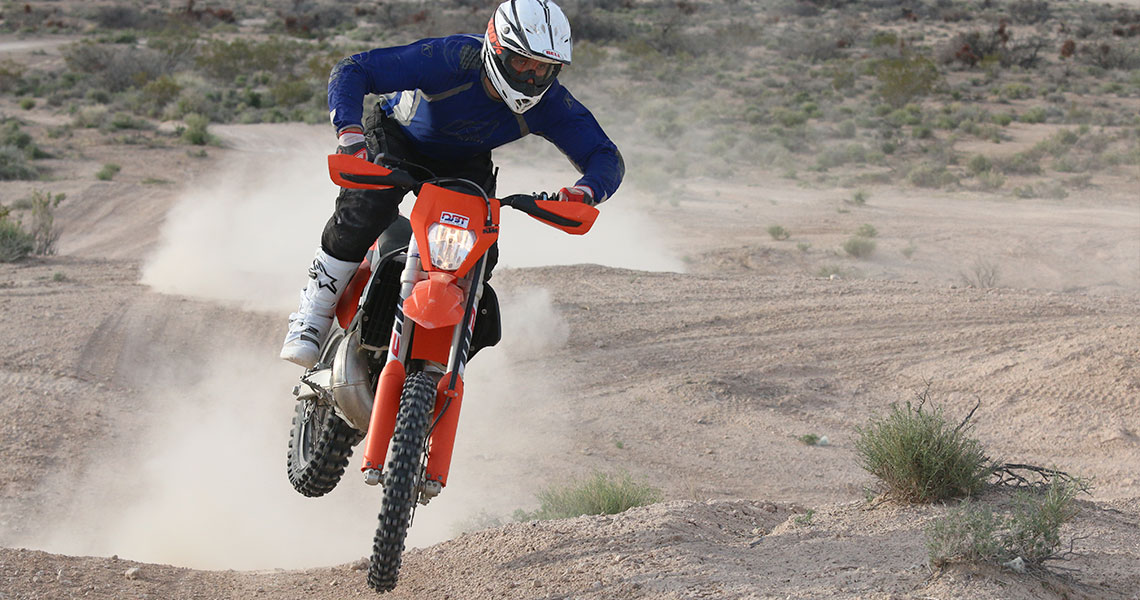
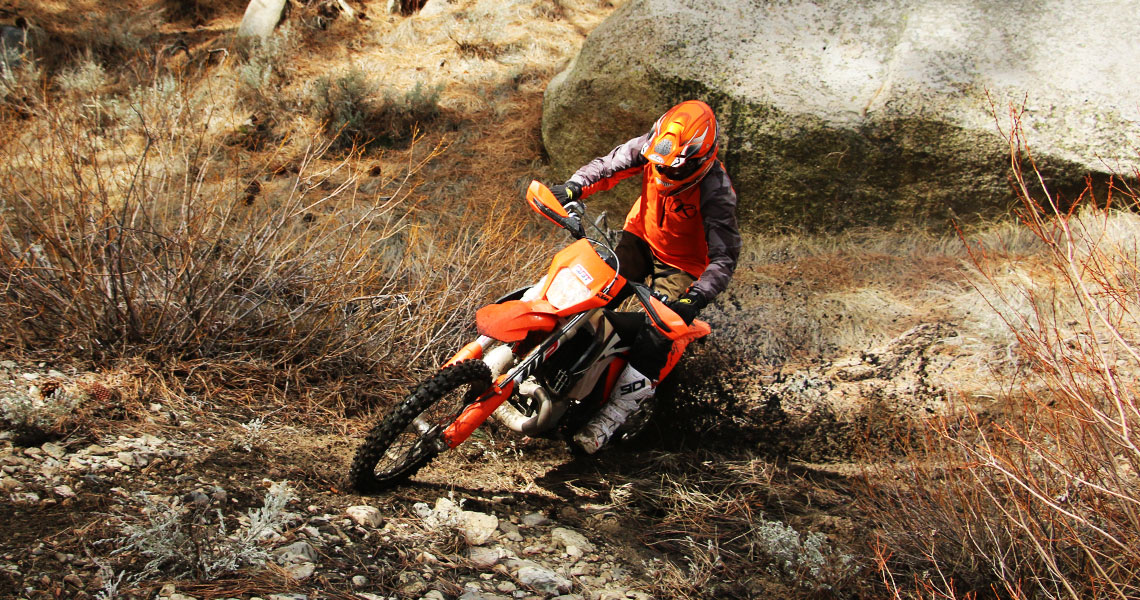
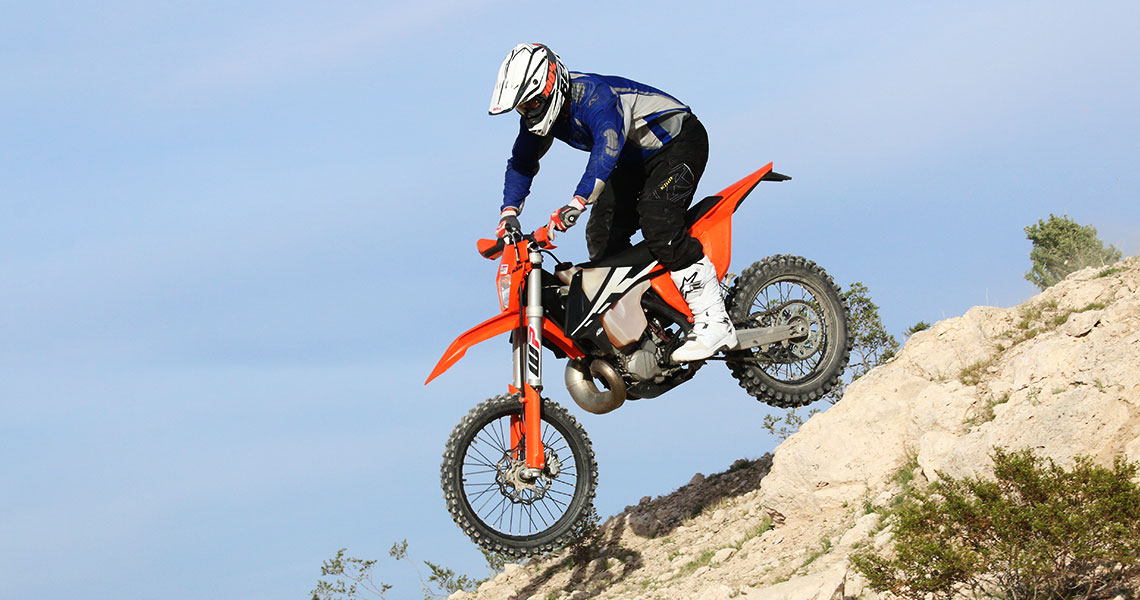
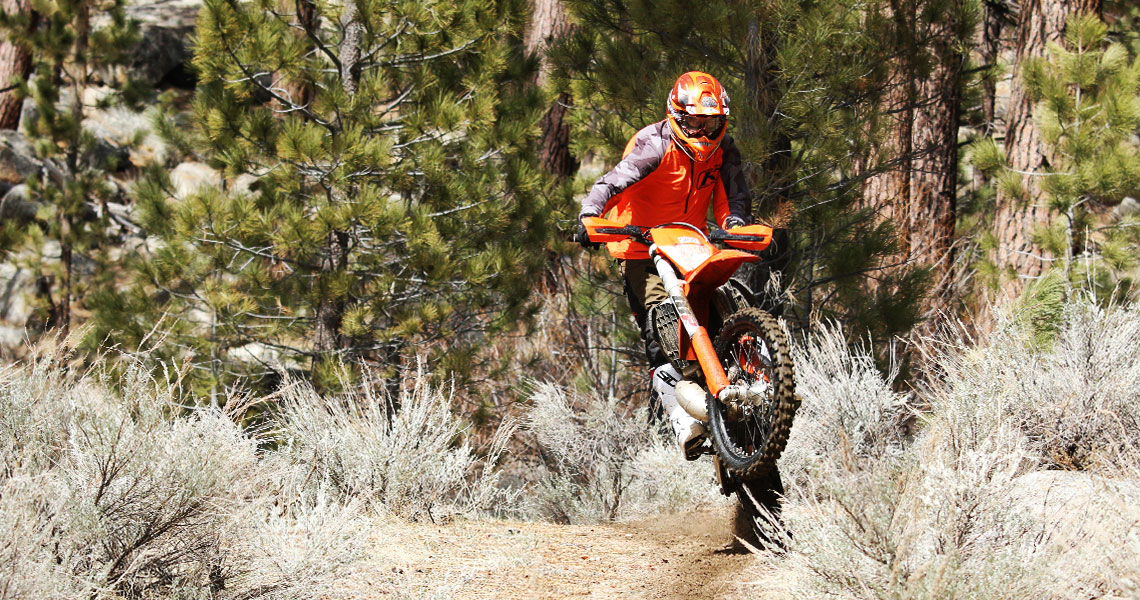
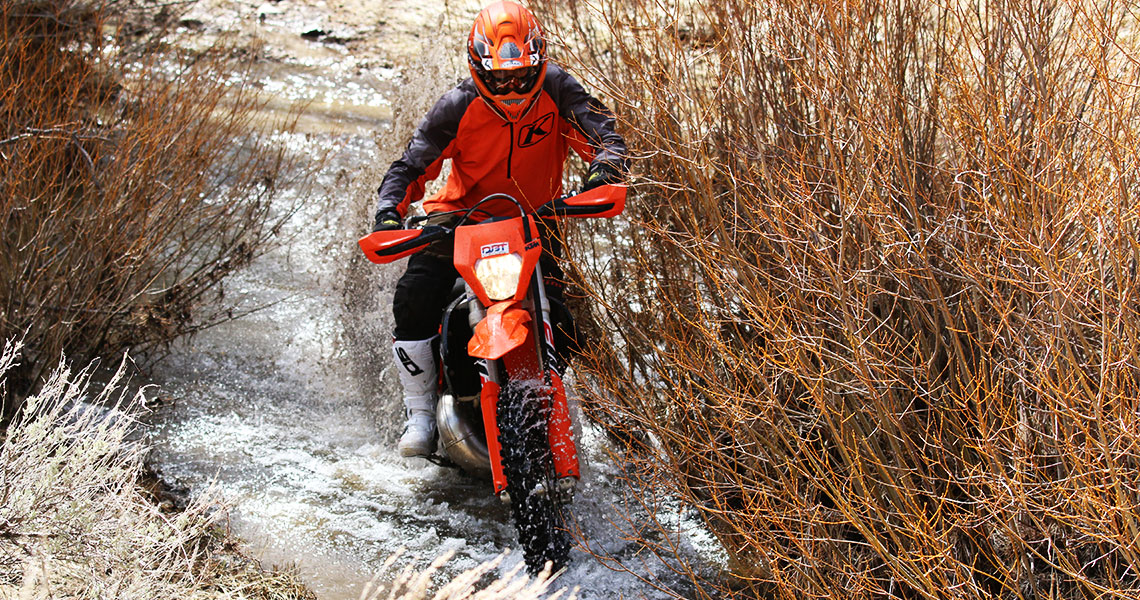


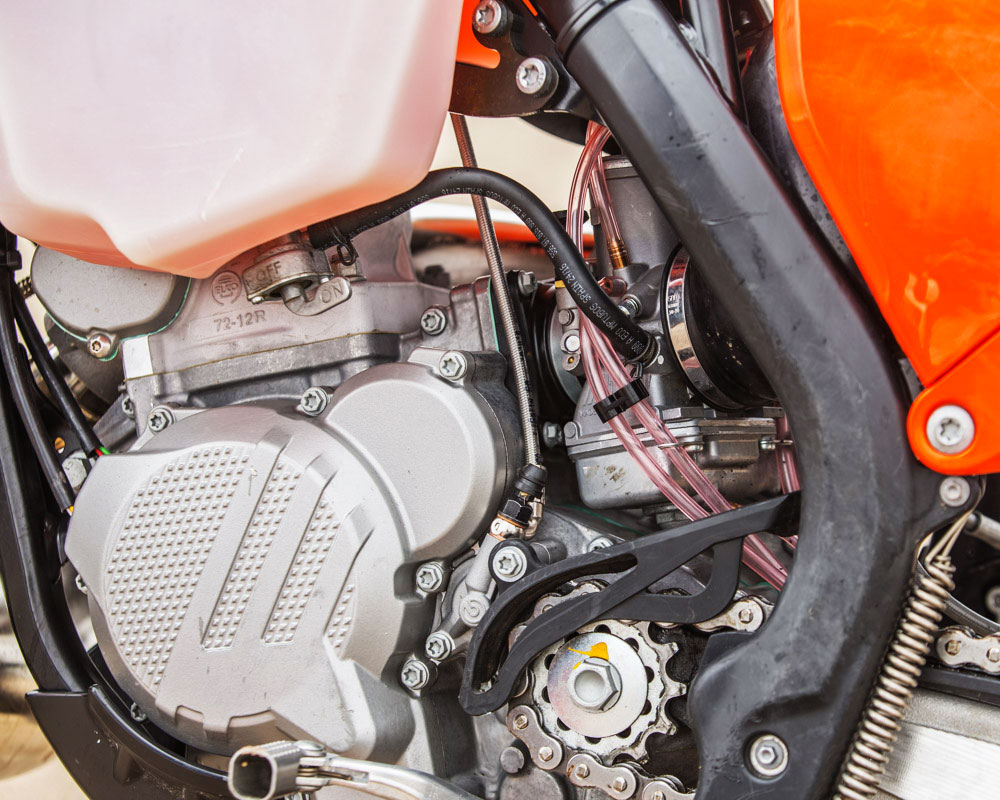



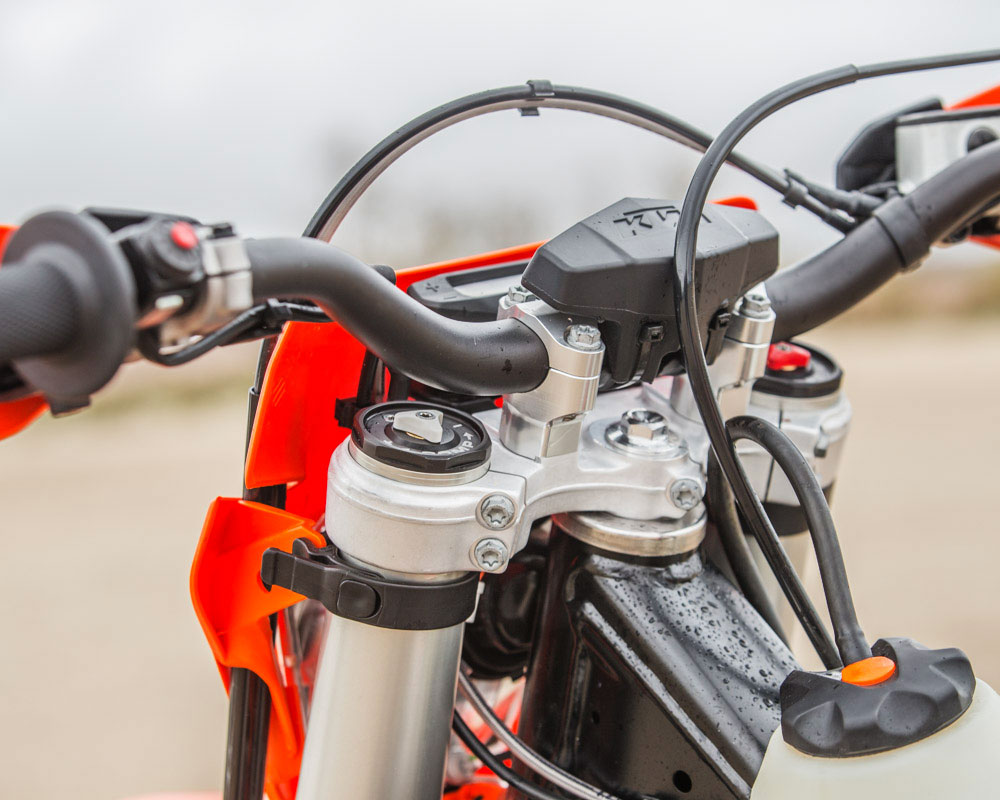
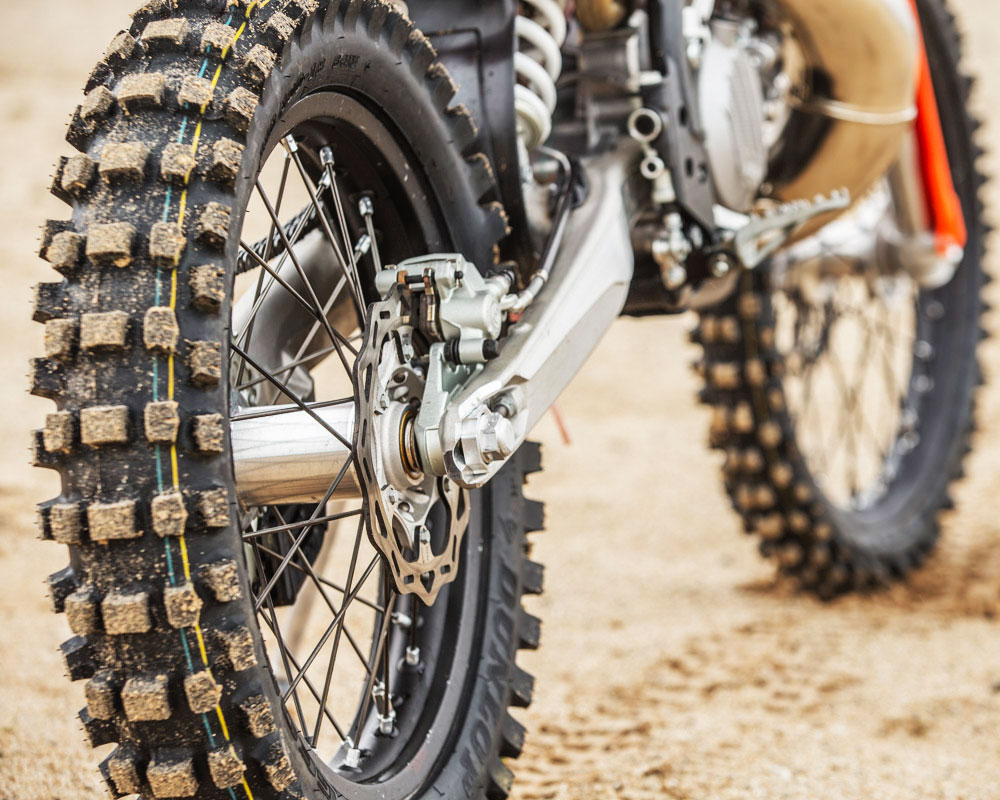


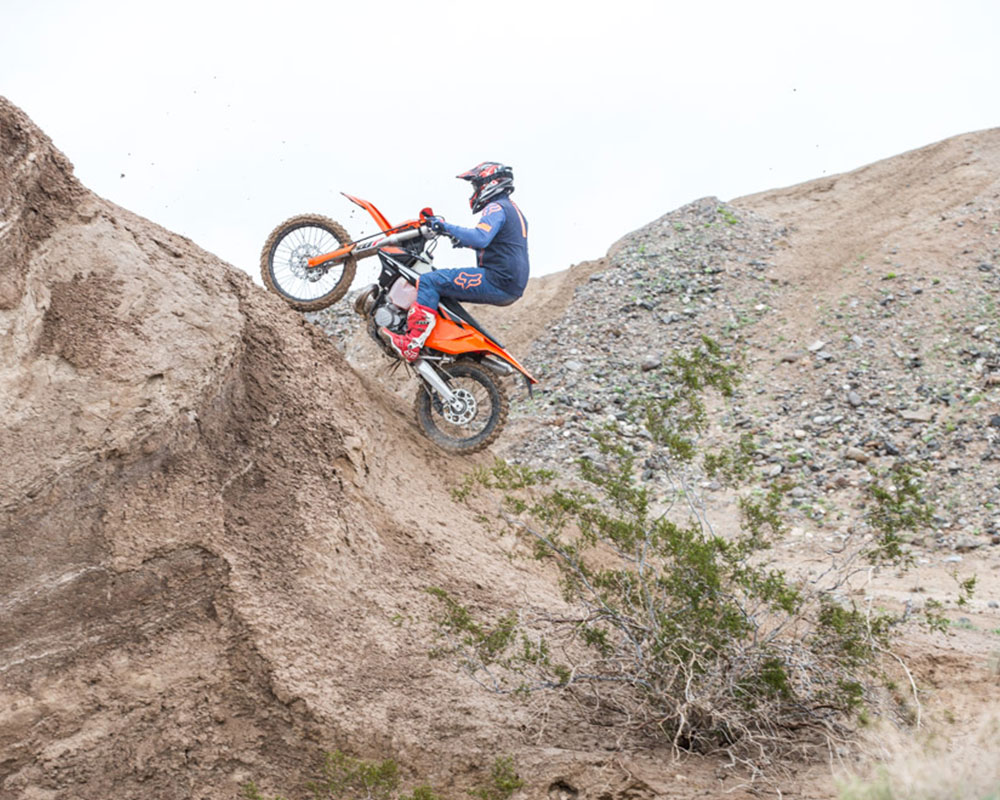
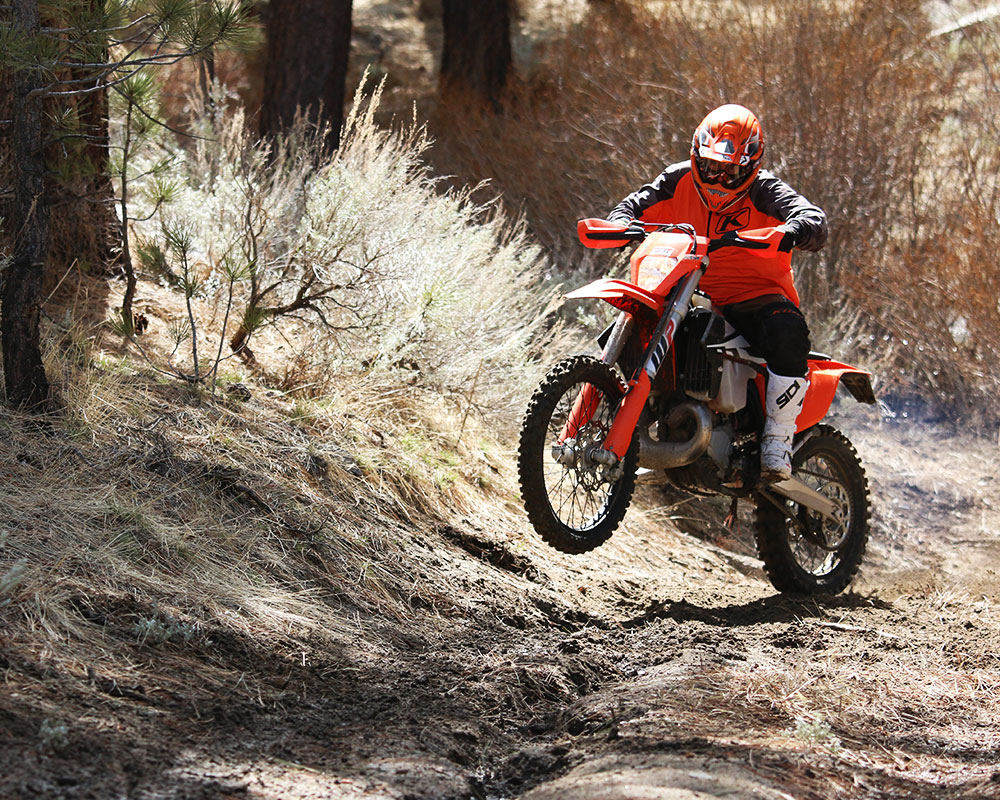
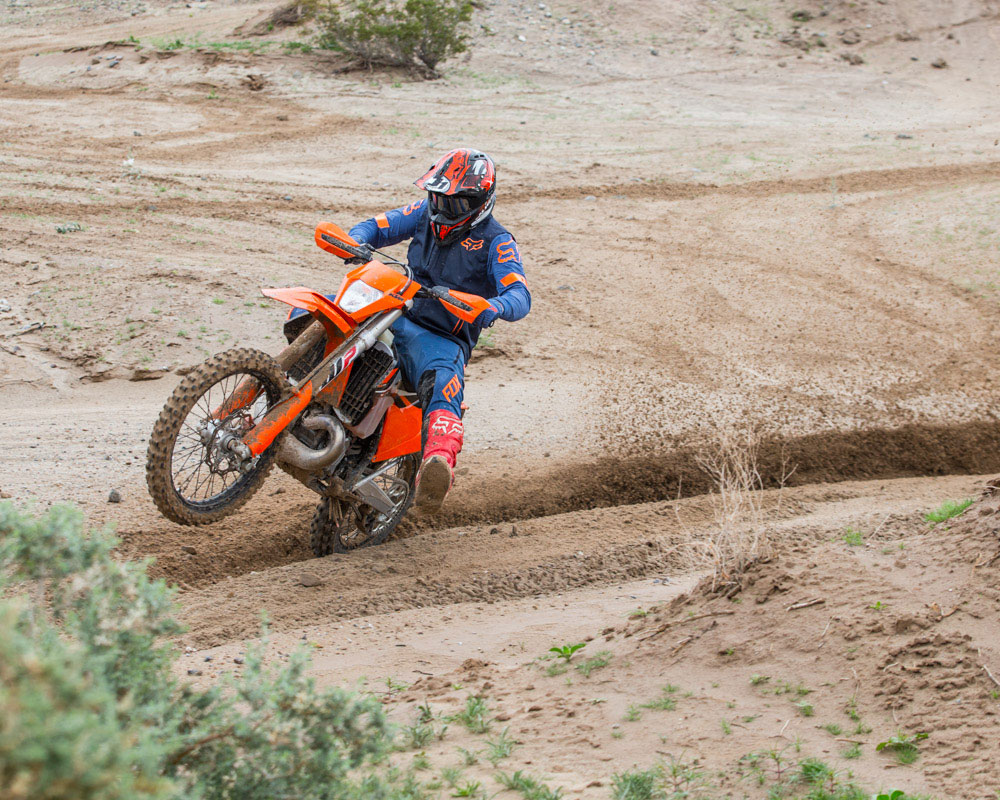



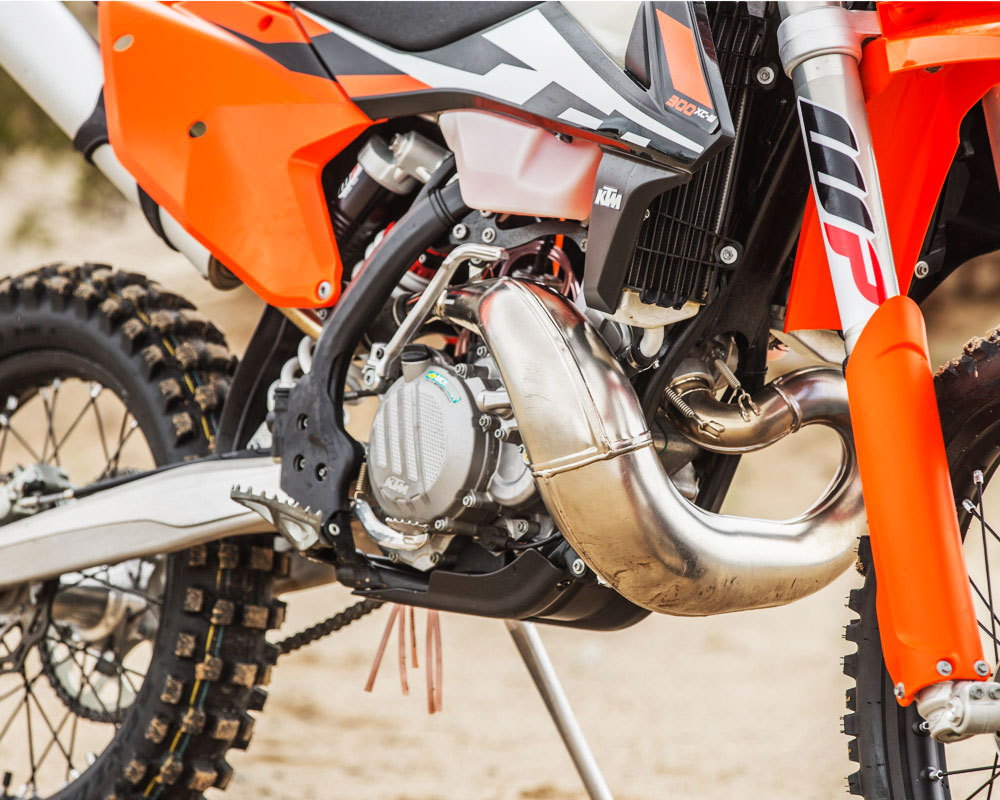
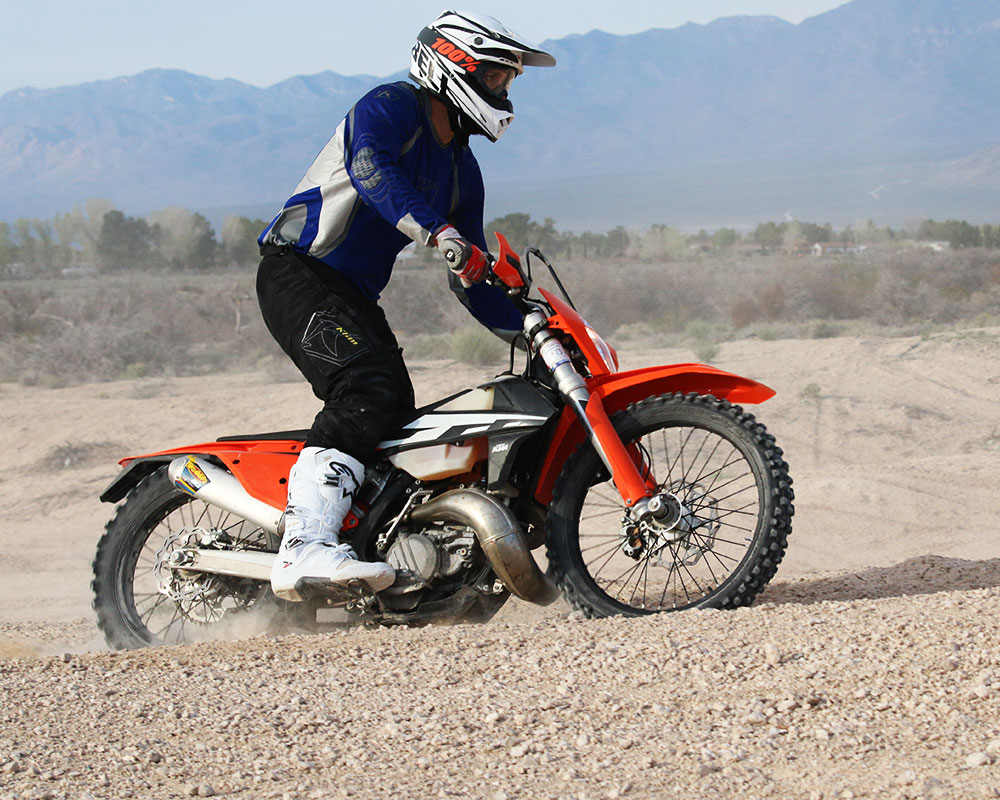

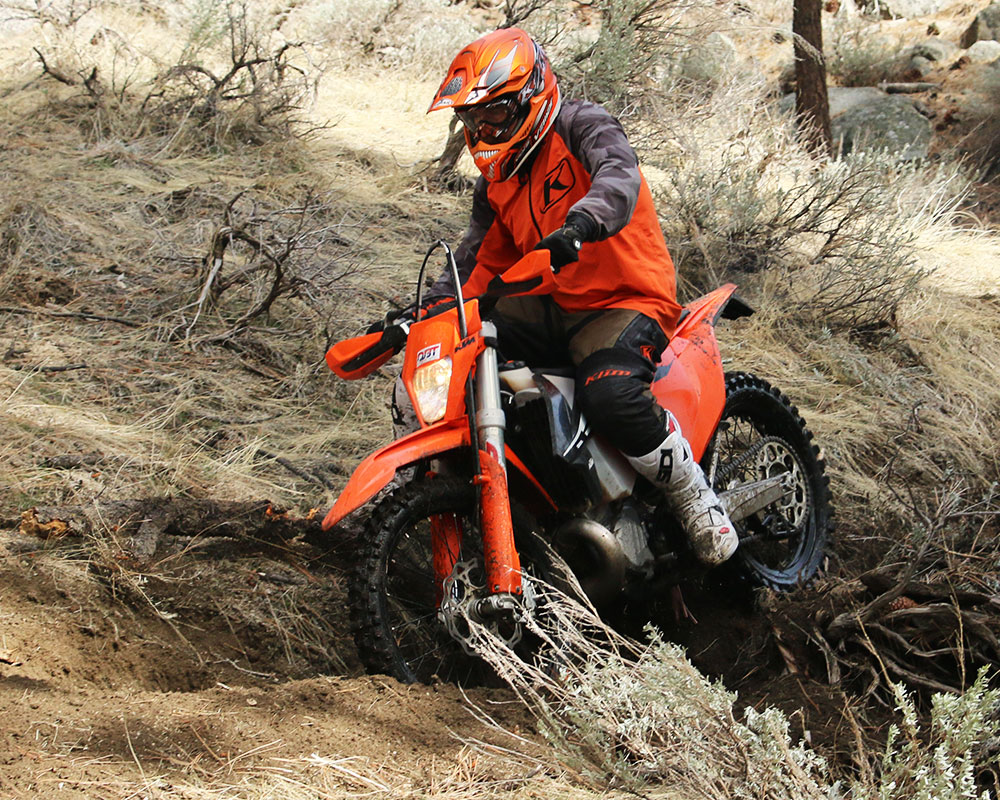
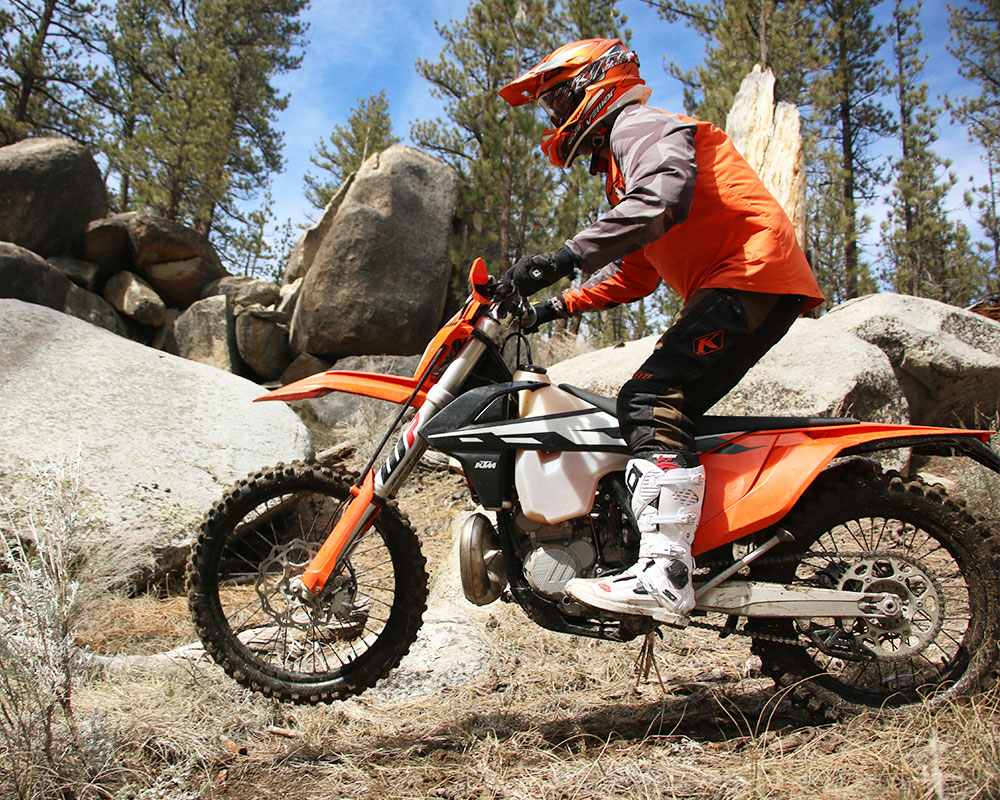
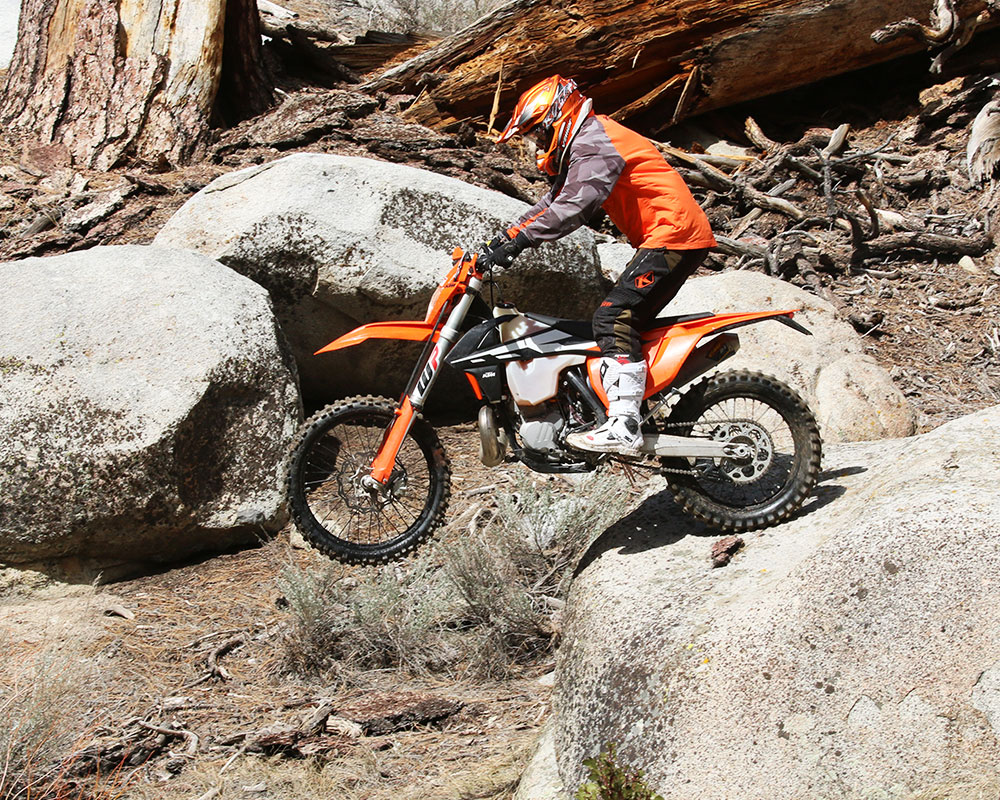
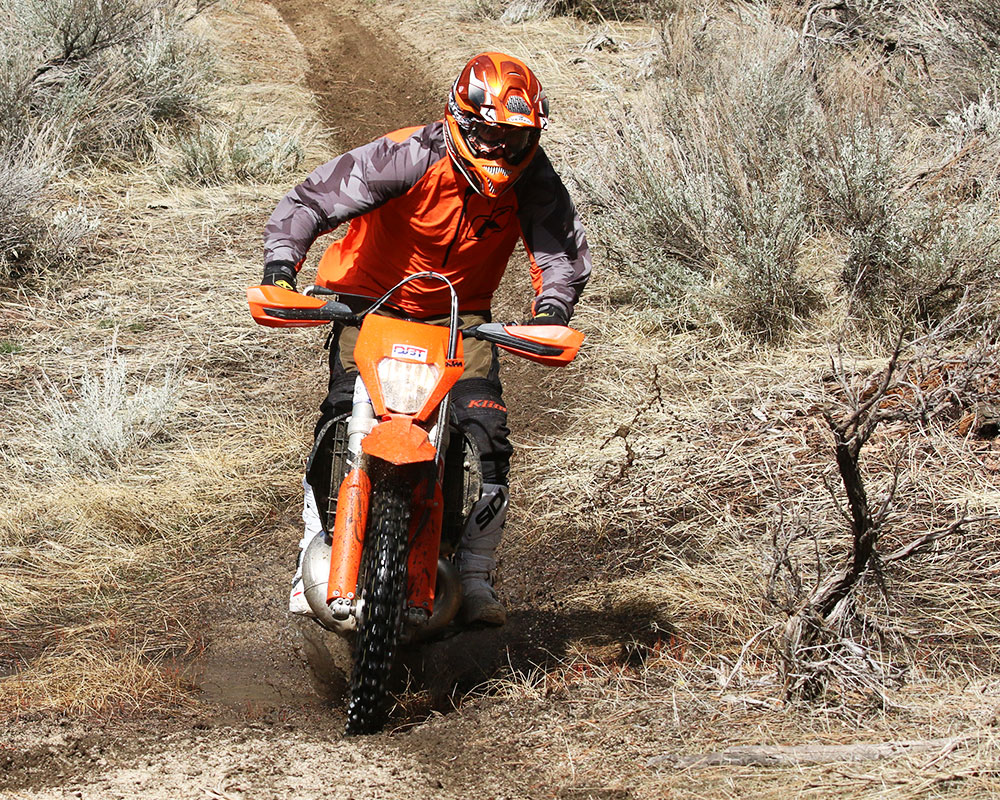
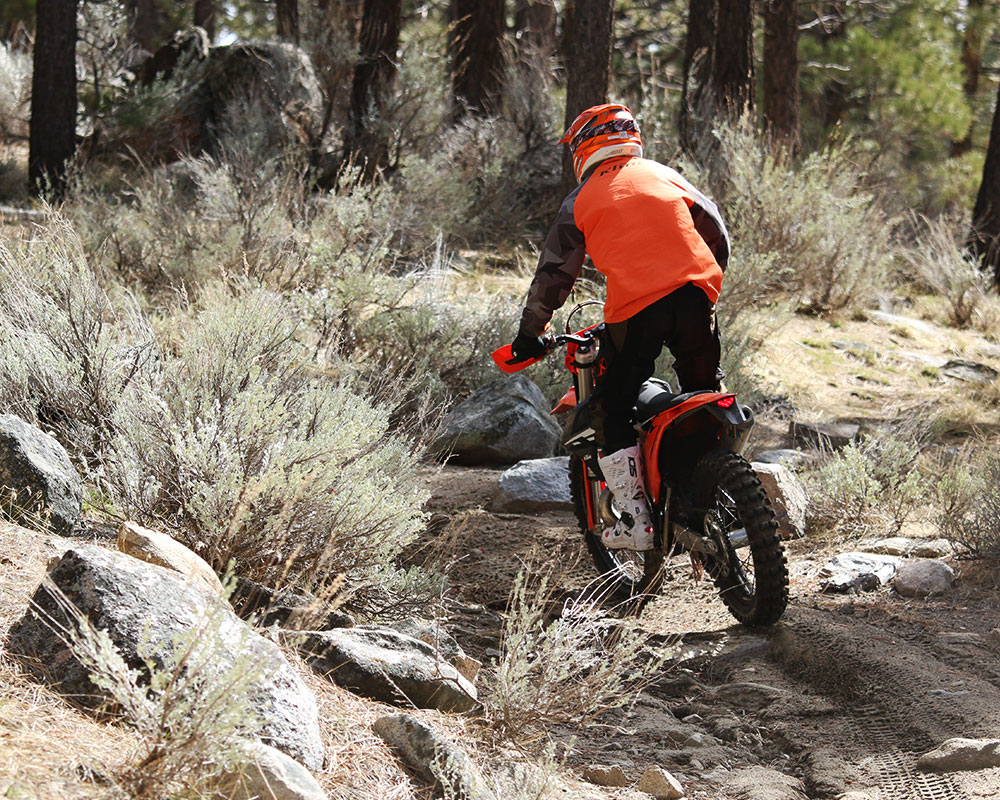
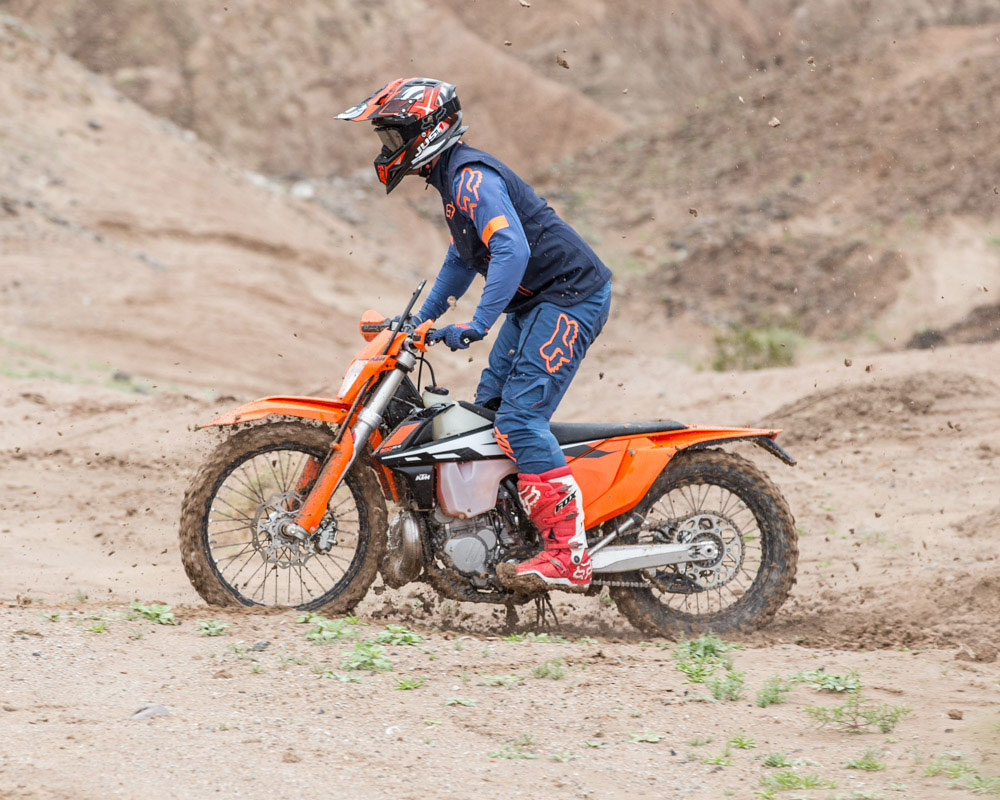
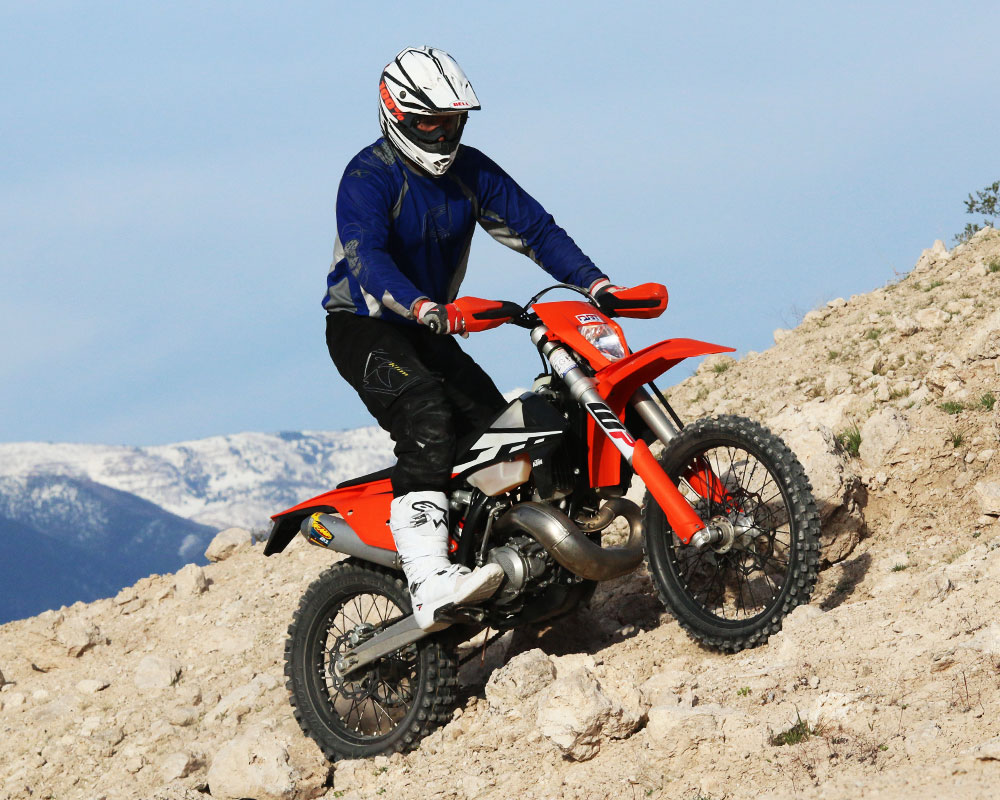


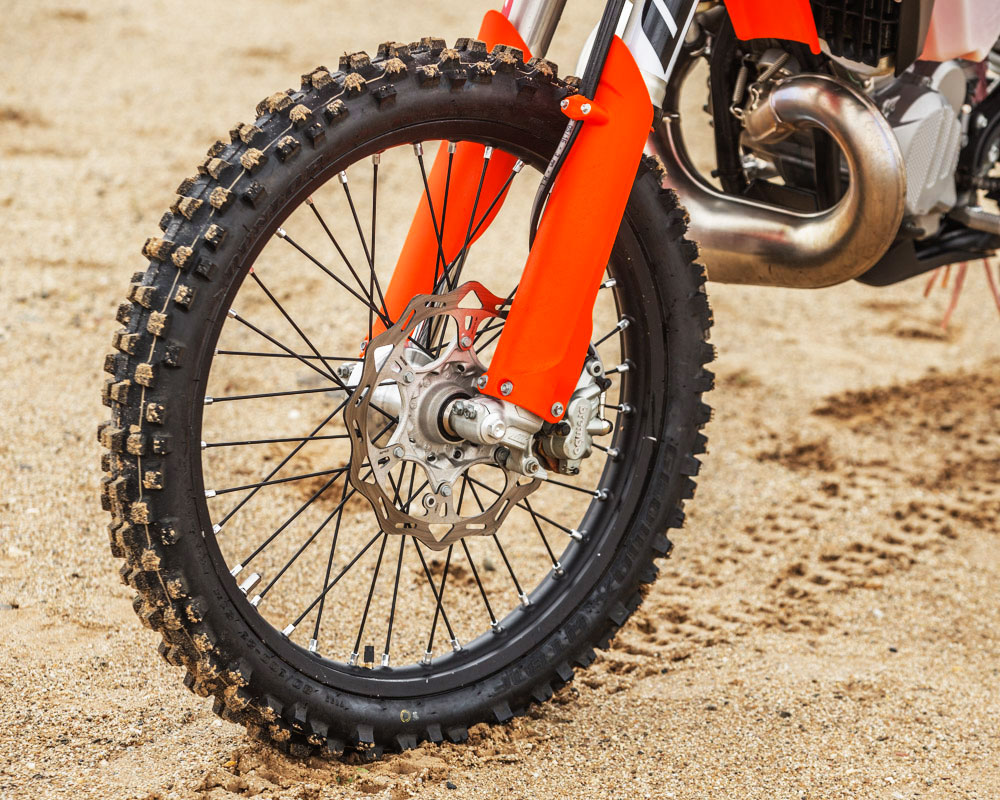
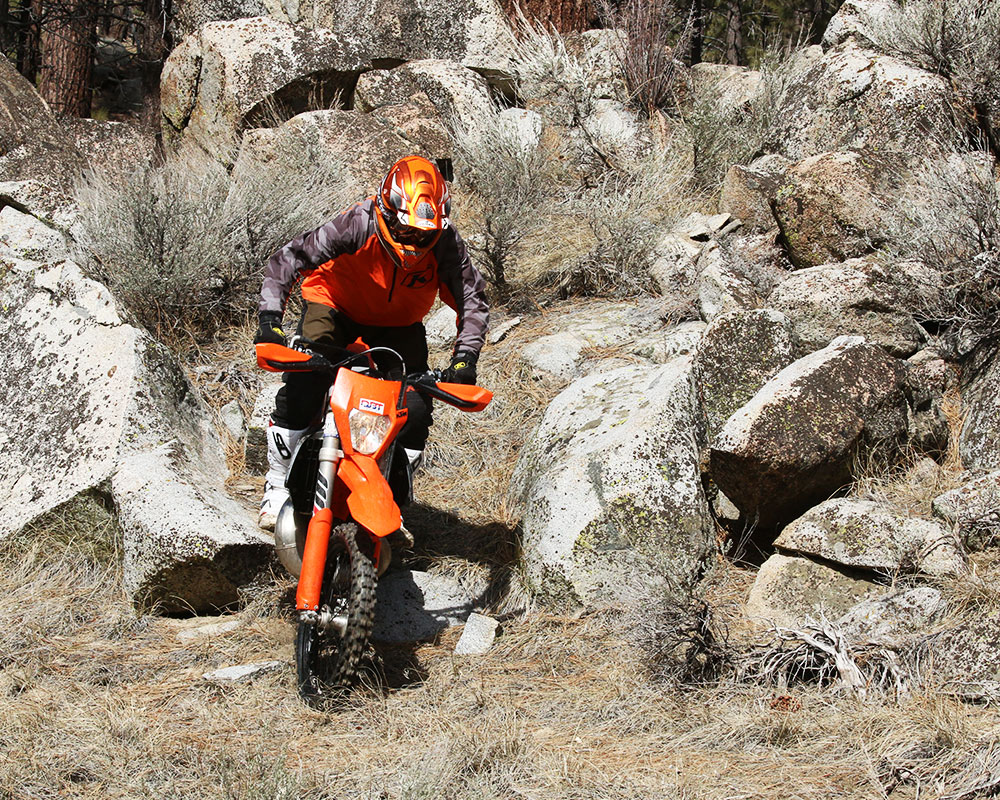
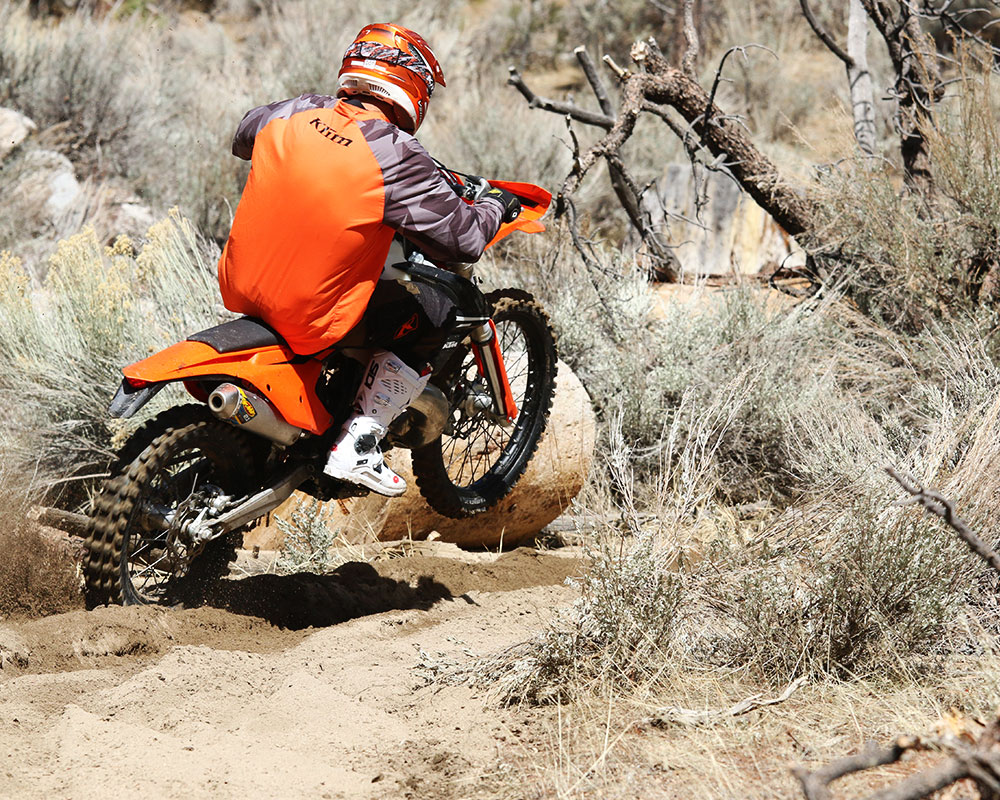


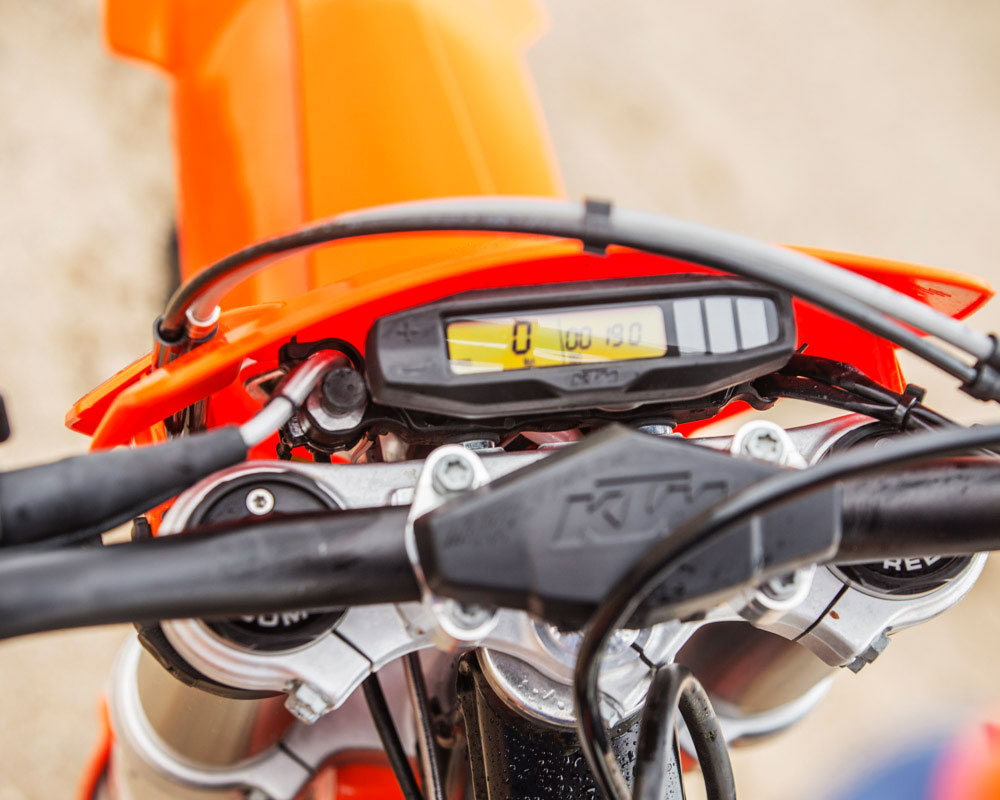
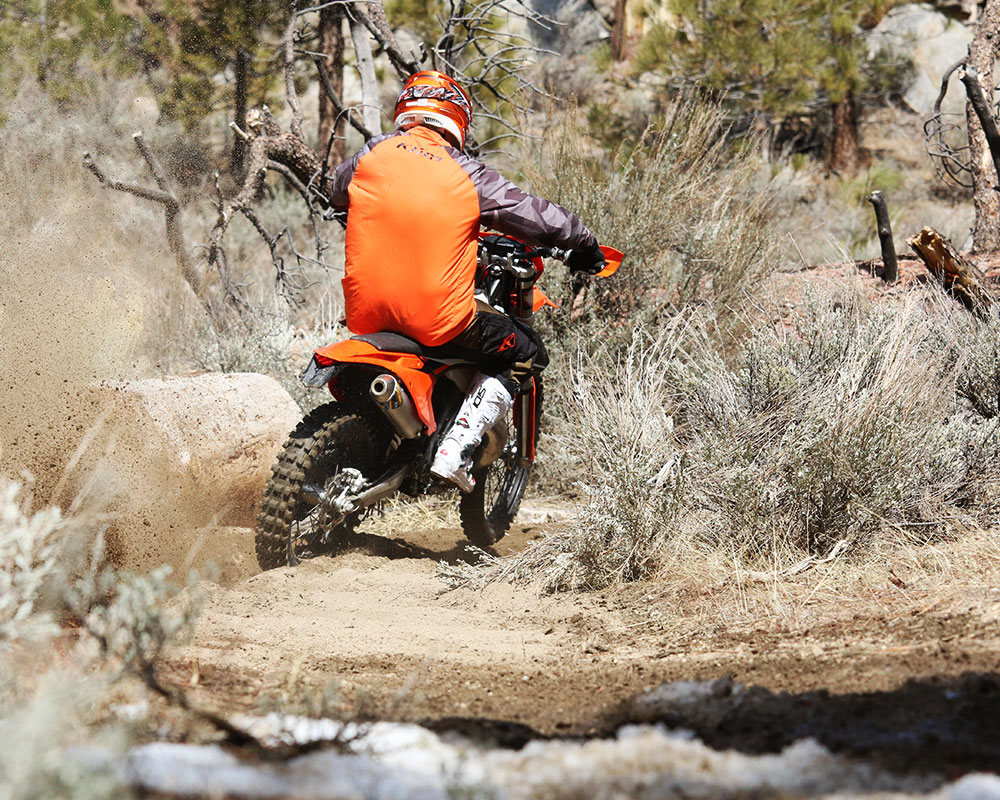
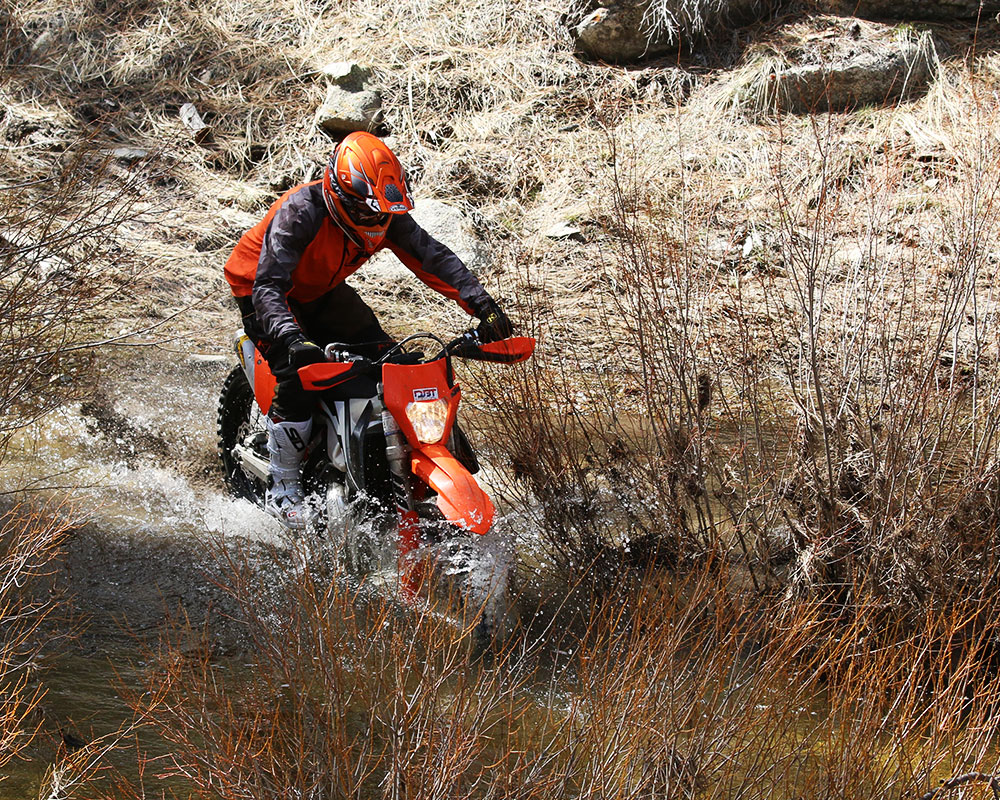
2 Responses to “2017 KTM 300 XC-W”
Chris Rogers
No XC review? After a lot of back and forth I decided on a 17 250 XC, I hope i made the right decision. I did read the TX review which should be similar to the XC.
Jimmy Lewis
KTM pretty much sells every bike they bring in so on their side there is not a lot of need to get press or evaluations on every bike. So we do not get units to test. In fact their demo ride program has been giving riders a chance to ride every model, which is very successful. Not a full test but better than reading about it for most. And the Husky (as similar as it seems) is a very different animal.
But by watching this site and getting others to, it gives us leverage to get more test bikes so we can communicate detailed evaluations that take a lot more time and effort than 10-minutes around a short loop…